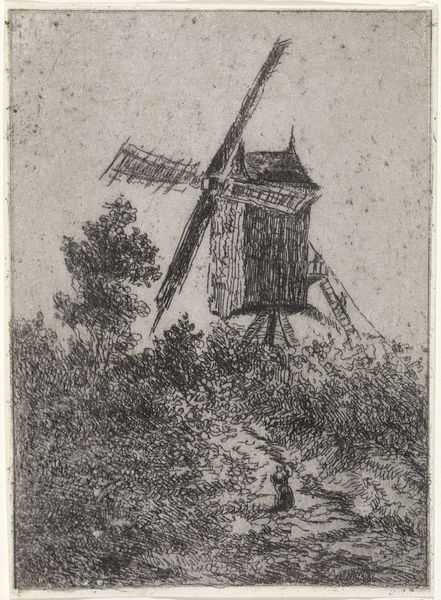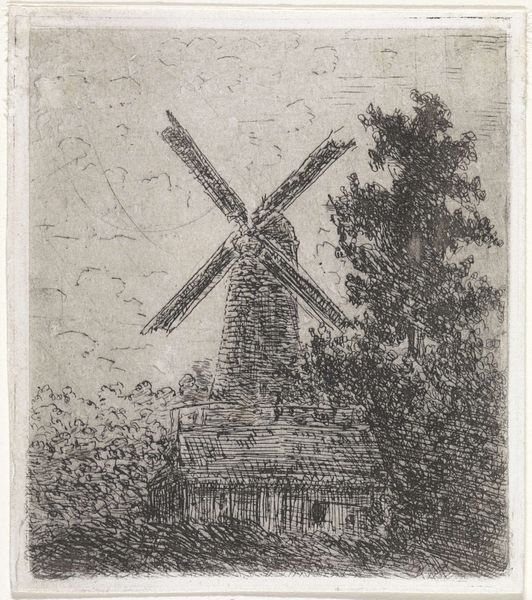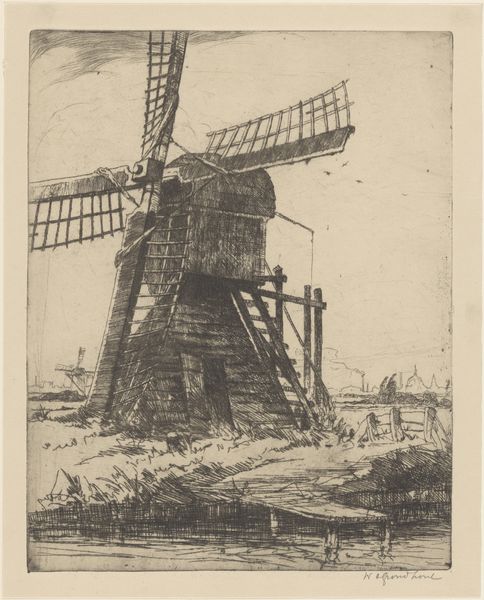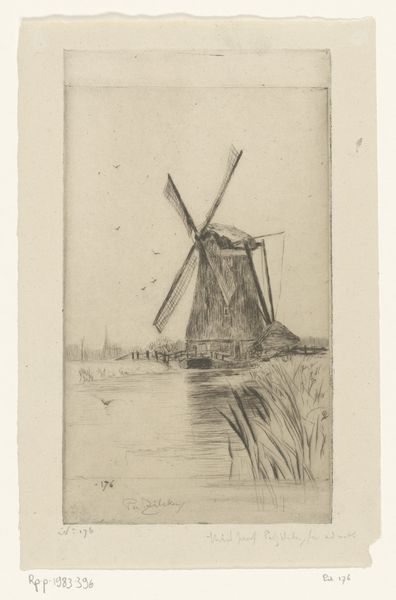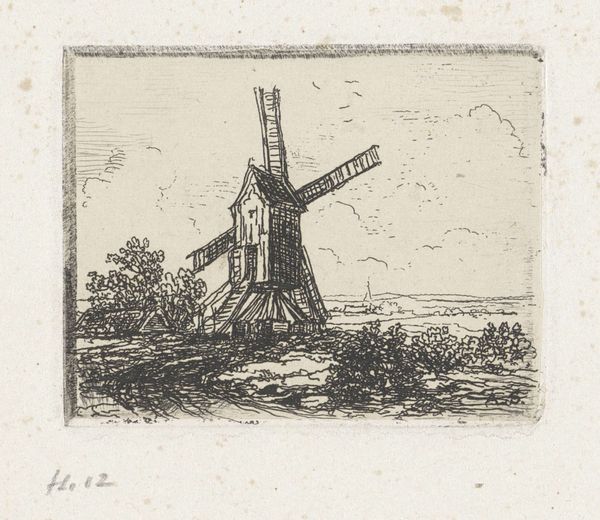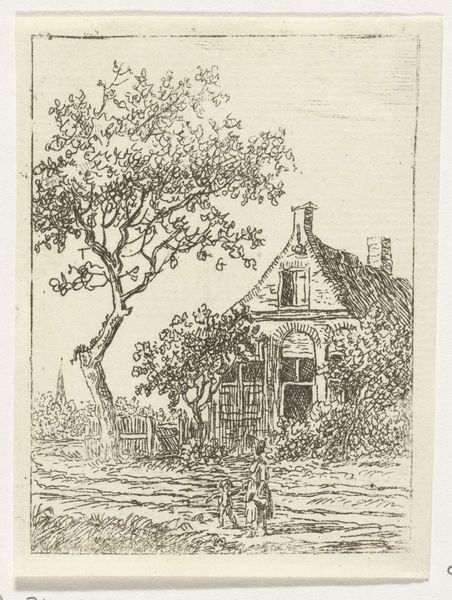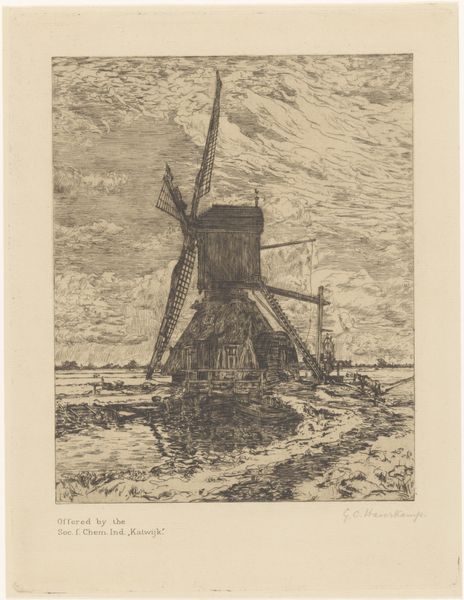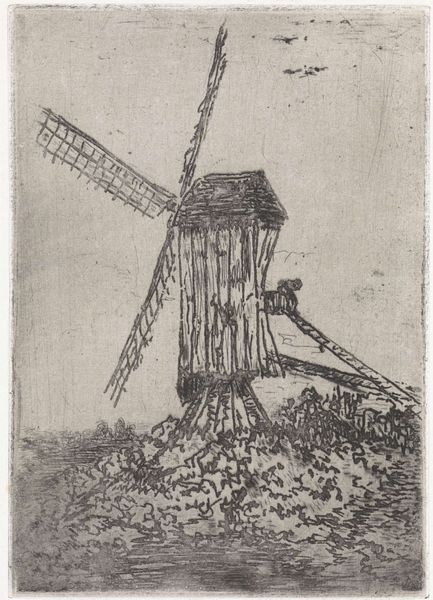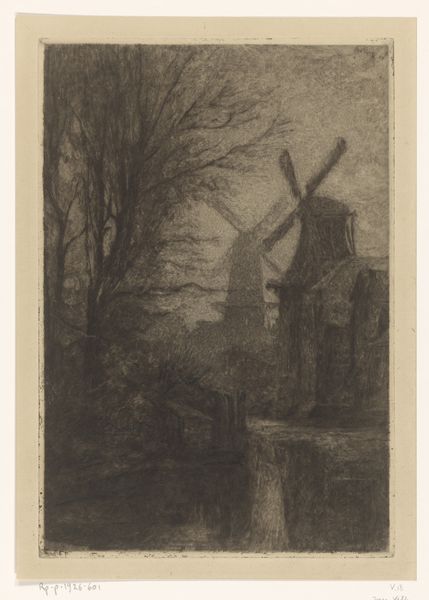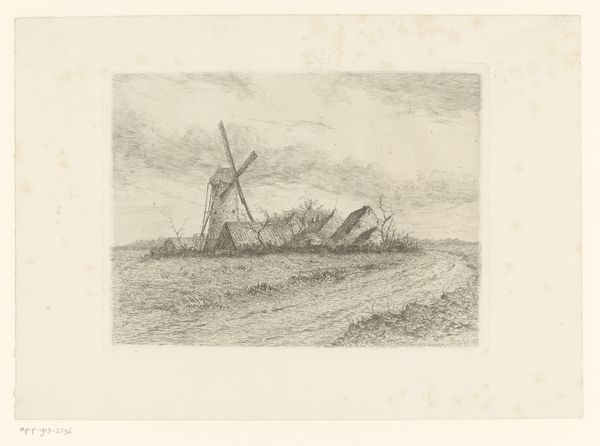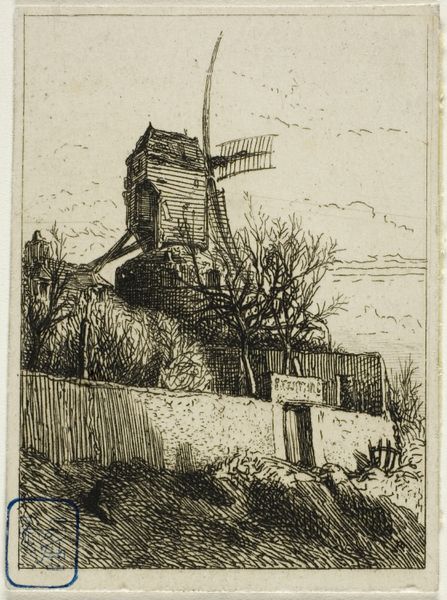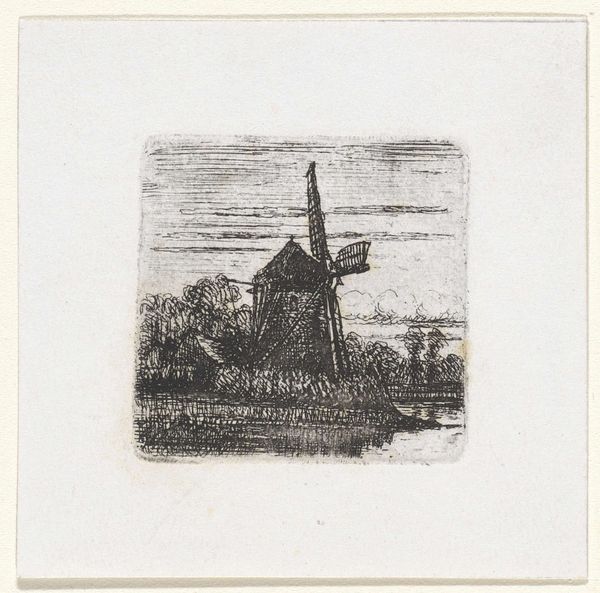
print, etching
# print
#
etching
#
landscape
#
realism
Dimensions: height 196 mm, width 124 mm
Copyright: Rijks Museum: Open Domain
Curator: Let’s discuss "Windmolen," an etching dating from sometime between 1831 and 1888 by Arnoud Schaepkens. Editor: It’s a detailed piece. My first impression is one of rural quietude, that stillness only broken by the imagined creak of the windmill. The strong contrast in values really helps focus the eye. Curator: It does capture a serene scene, doesn’t it? Schaepkens, while perhaps not as widely known as some of his contemporaries, presents us here with a fairly straightforward realist portrayal of Dutch rural life. Editor: What interests me is what this seemingly objective representation might obscure. Windmills are romanticized symbols of Dutch national identity, linked to technological ingenuity and the fight against the elements. But this iconography often overshadows the labor involved, doesn't it? I also wonder about that lone figure walking the path... Curator: An astute observation. The figure certainly draws our eye, and provides scale to the scene. From a historical perspective, windmills also represent an important step in industrialization and harnessing non-animal power. They were instrumental in processes beyond simply grinding grain, such as powering sawmills. Editor: Absolutely, and considering Schaepkens was working during a period of immense social and economic change, the presence of that lone figure also emphasizes how the industrial changes that windmills represent deeply affects common folks like this person on the path, living their own life within the winds of bigger societal shifts. The figure could also be taken to symbolize all those displaced by the oncoming industry. Curator: Well, looking at it with contemporary eyes, one could certainly interpret that person as emblematic of the era's disquiet, with anxieties about industrial growth and social stratification increasingly shaping artistic sensibilities. Editor: I find that context vital to understand how what we consider to be an everyday landscape scene today spoke, or didn't speak, to the inequalities inherent in that progress at the time of its creation. The seeming romanticism is certainly loaded. Curator: Indeed. It's a powerful example of how everyday technology becomes embedded into the artistic representation of culture and society. Editor: For me, works like "Windmolen" serve as potent reminders that the art we examine should do more than invite admiration for its beauty; it should ignite critical dialogues around broader social realities, then and now.
Comments
No comments
Be the first to comment and join the conversation on the ultimate creative platform.
